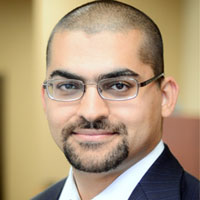Steps to Follow Before Going for Hair Transplant
Although a cosmetic procedure, hair transplant is nothing short of any other type of surgery and utmost care is imperative in selecting the surgeon, the clinic, the procedure and finding the success rates of the transplant.
Websites of most hair transplant clinics give the credentials of the surgeons who do the procedure. The procedure is safe when performed by an experienced surgeon but patients may differ in their reactions and healing times.
A 100 percent success for one person may not be reproduced in another person sometimes. There are instances of scars showing or grafts not establishing regrowth properly or the occurrence of small bumps. However all these can be rectified by additional surgical procedures. A thorough research of procedures and what will suit the patient is necessary which will be ensured by an experienced and qualified surgeon.
Research includes talking to previous patients, discussing on online forums and getting maximum feedback about the clinic before going for the procedure. The number of procedures undertaken by a surgeon is also vital as too many a day will leave the surgeon tired and unsteady. If done properly hair transplant can give natural looking hair which will last a lifetime.
After in-depth research of hair transplant procedure, surgeon, clinic and costs involved a study of safety precautions followed in a clinic by surgeons and assistants has to be examined. This can be done while going for a preliminary visit.
If surgeons and their team members are well experienced they will know the importance of sterile conditions in the procedure room. All surgical equipment has to be sterilized and protected well. The patients themselves should be wearing disposable garments when undergoing the hair transplant to avoid infection caused by dust and dirt.
The surgeon and his team should also be attired properly in gowns, with surgical masks, gloves, shoe covers etc. as removing hair grafts from one part of scalp and transplanting it in another part is similar to other types of surgery which are done in a specialized operating theater. Safety covers are a must on all other equipment in the surgery room also.
A dressing to cover the surgery area to protect it from infections is important. Infection on the scalp will upset the procedure which will then have to be repeated.
It is in the hands of the patient who should make a thorough investigation into every minute detail regarding hair transplant procedure and hygiene followed in a clinic besides about the expertise of the surgeon before going for the procedure.
Hairfear
Frequently asked questions about hair transplant procedures
How much does a hair transplant cost?
Hair transplants can vary in price based off of the area in the world that you are interested in getting a hair transplant as well as the size of the area where you may need a hair transplant. Experienced doctors in the United States will often charge some of the highest prices for a hair transplant worldwide and this is why so many travelers make the move to other parts the world like Turkey, India, Thailand, Mexico...etc for their hair transplants.
Will a hair transplant hurt?
Although hair transplants may look like a particularly
unpleasant or painful experience is actually very little discomfort involved
with the surgery itself. Hair transplants are always done under an anesthetic so there's absolutely zero pain during the treatment itself. Many people actually relate the process as being very similar to going to the dentist for filling or root canal. Mild pain can persist over the course of postop treatment but he generally just resumes for a few days.
Who can deliver the best surgery?
It's usually best to consider working with surgeons who have and IAHRS certification or international alliance of hair restoration surgeons recognition. IAHRS can often deliver recommendations for the best surgeons in each particular area.
Is this scarring noticeable?
Any type of hair transplant will require the use of incisions throughout the scalp. There can also sometimes be a small scar from the donor area towards the back of the scalp. Asking to look at photos of the surgeon's previous work will help you to see roughly how bad the scarring could be. In most cases an experienced professional can limit the look of scarring and noticeable marks from the surgery.
How long does it take for the hair to grow?
In most cases hair growth will start within eight months and you can start to see a full effect from the hair transplant after a full year. The initial signs of growth can usually start between 3 to 4 months after the surgery.
Are the results permanent?
The hair follicles that are transplanted are generally the ones which are genetically resistant against the symptoms of baldness. As long as you receive hair loss treatment later in your life after the symptoms of balding have started to subside, you can have a better chance at permanent results.
While everyone know you've had surgery?
If you want to limit the chance that people may find out about your surgery it's important to give at least three weeks of healing as the surgical area will be affected and red just after surgery. After around a month of healing it can look far less noticeable. You could consider wearing a hat while time passes or opting for some extra time off if possible.
How long should I rest after surgery?
It's recommended to rest for at least a few days after surgery so that your body can recover. Trenton to over exert yourself and limit sexual activity, running in the gym for around 10 days after surgery.
Is it possible to lose more hair as a result of surgery?
There is always a chance of shock loss which happens when the hair is weak and miniaturizing after the surgery. As long as the surgeon is choosing the correct hair follicles and performing the surgery well it's possible to minimize the chance of this happening however.
Will I need another hair transplant?
The need for another transplant really depends on the individual. With a solid foundation surgery and working to potentially bolster results with drug therapy, you can improve the stability of the hair that was transplanted as well as prevent further loss. Getting a hair transplant early
on in your 20s or early on in life could lead to needing long-term transplants as hair loss can be progressive.







